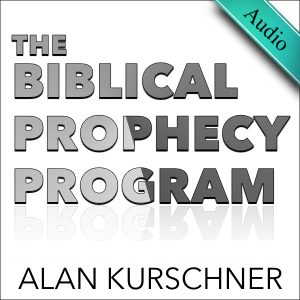Podcast: Play in new window | Download | Embed
 I described the prewrath position by outlining 15 essential tenets that someone must affirm in order to hold to a prewrath position. They are core minimum beliefs. If someone denies any of these definitional points they cannot be said to be prewrath in a meaningful sense of the term.
I described the prewrath position by outlining 15 essential tenets that someone must affirm in order to hold to a prewrath position. They are core minimum beliefs. If someone denies any of these definitional points they cannot be said to be prewrath in a meaningful sense of the term.
I prefaced the program with two issues. First, I explained there are secondary issues that prewrathers disagree on that are not essential to the prewrath position. Listen to find out what some of these secondary issues are.
The second point I prefaced the show with was discussing the confusing and contradictory label “postrib-prewrath.” It is best to jettison this misleading term from the theological debate, and either affirm postrib or prewrath, because one cannot affirm both at the same time in any meaningful fashion.
In the main part of the program I discussed the following 15 tenets of prewrath eschatology:
1. There is a future seven-year period, and at the midpoint the Antichrist will be revealed and commit the abomination of desolation, initiating his great tribulation against the Church and Israel.
2. There is a biblical distinction between the Antichrist’s great tribulation against the Church and Israel and the day of the Lord’s wrath against the ungodly. The latter event happens after the former event.
3. The gathering of the elect mentioned in Matthew 24:31 refers to the rapture (cf. Mark 13:27; Luke 21:28; Rev 7:9–17; 1 Thess 4:13–18; 2 Thess 2:1).
4. At an unknown day and hour during the second half of the seven-year period, the Antichrist’s great tribulation will be cut short by the Revelation of Christ to resurrect and rapture God’s people, and this will be followed immediately by the day of the Lord’s wrath executed upon the ungodly.
5. On the same day the rapture happens, the onset of the day of the Lord’s wrath takes place, just as it was in the days of Noah and Lot (Luke 17:22–37; cf. 2 Thess 1:5–10).
6. The second coming (parousia) is not a simple (instantaneous) event. The second coming is a complex-whole event containing various purposes of God, beginning with the Revelation of Christ in the sky displaying his Shekinah glory and power to the whole world, and resurrecting and rapturing God’s people, followed by the day of the Lord’s judgments upon the ungodly and Antichrist’s kingdom, restoring Israel to salvation, and culminating in Christ’s earthly reign.
7. Although Armageddon is an element within the complex-whole second coming, Armageddon does not initiate the second coming; instead, the second coming begins between the sixth and seventh seal.
8. The resurrection and rapture happens between the opening of the sixth seal and the seventh seal.
9. The first six seals are not part of the day of the Lord’s wrath. The first six seals are conditional events that must happen before Christ’s return.
10. The sixth seal signals the impending day of the Lord’s wrath as recorded in Joel 2:30–31; Matthew 24:29; Luke 21:25–26; Mark 13:23–25; and Revelation 6:12–17.
11. The seventh seal pronounces the day of the Lord’s wrath.
12. The trumpets, bowls, and Armageddon contain and execute the day of the Lord’s wrath.
13. The trumpets, bowls, and Armageddon will not occur before the seventh seal is opened.
14. Paul’s “last trumpet” (1 Cor 15:52) is not identified as the seventh trumpet judgment in the book of Revelation.
15. Christ’s return to resurrect and rapture God’s people is not imminent (“any moment”), since discernible prophesied events must happen first (e.g., the Antichrist’s revelation and his ensuing great tribulation; the apostasy; coming of Elijah; and a cluster of discernible celestial events). Christ can return in any generation of the Church.
Links mentioned in the show:
https://www.alankurschner.com/2012/07/31/tenets-of-prewrath/
https://www.alankurschner.com/antichrist-before-the-day-of-the-lord/


